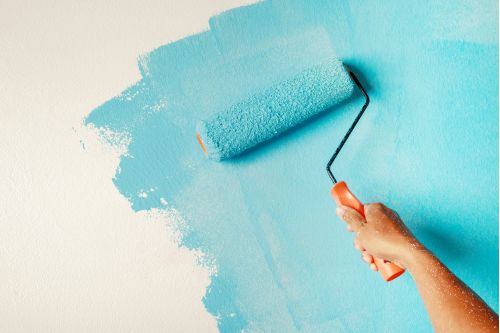When we are faced with a painting project, whether in our home or in a commercial space, one of the most important aspects to consider is how much paint we will need. Often, we ask ourselves how many litres of paint are spent per square metre. This question is critical to properly plan the budget and resources needed to successfully complete the project.
The importance of calculating accurately
Calculating the right amount of paint is essential to avoid unnecessary costs and ensure a satisfactory finish. There is nothing worse than running short of paint in the middle of a project or ending up with cans and cans of unused paint at the end. Therefore, it is crucial to accurately calculate the amount of paint required to cover the desired surface.
Contact our professionals to paint your home
It is important to bear in mind that paint consumption can vary according to several factors, including the surface texture, the type of paint used and the application technique. Therefore, there is no single answer to the question of how many litres of paint are used per square metre. However, there are some general guidelines that can help you estimate the amount of paint needed for your specific project.
Factors influencing paint consumption
Several factors can influence the amount of paint needed per square metre. One of the most important factors is the texture of the surface to be painted. Rough surfaces tend to absorb more paint, while smooth surfaces require less. In addition, the type of paint used can also affect consumption. For example, thicker, high-quality paints may cover better, which means you will need less paint overall.
Other factors to consider include paint colour and surface colour. Darker paints tend to require more coats for complete coverage, which increases paint consumption. Similarly, painting on dark surfaces may require more paint than painting on light surfaces.
Strategies to optimise paint usage
Surface preparation
One of the most effective ways to optimise the use of paint is to properly prepare surfaces before applying it. This includes cleaning the surface to remove any dirt or grease, repairing any damage or imperfections, and sanding to create a smooth, even surface. In addition, applying a good quality primer can help improve paint adhesion and reduce the amount of paint needed.
Proper surface preparation not only helps maximise paint performance, but also ensures a longer lasting, better quality finish. In addition, it can help prevent problems such as paint flaking or cracking in the future.
Efficient application techniques
The way you apply paint can also significantly affect the amount needed. For example, applying thin, even coats of paint can help reduce overall paint consumption. Similarly, using the right tools, such as high-quality rollers and appropriately sized brushes, can help maximise paint yield and avoid waste.
Another effective technique for reducing paint consumption is to thin paint as needed. However, it is important to follow the manufacturer’s recommendations and not to over-thin the paint, as this can negatively affect the quality of the finish.
Achieving optimum results
Calculating the right amount of paint and optimising its use is critical to the success of any paint project. Through proper surface preparation and efficient application techniques, you can maximise paint performance and achieve optimum results on your projects.
Remember to consider all factors that can influence paint consumption, and follow the recommendations provided to accurately calculate the amount of paint needed for your specific project. With careful planning and the right strategies, you can complete your painting project successfully and achieve a professional, long-lasting finish.

